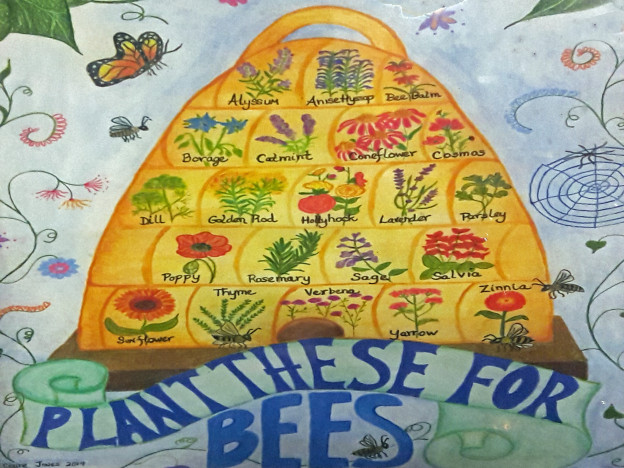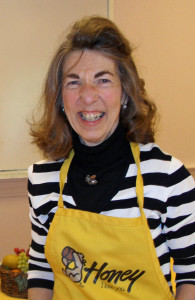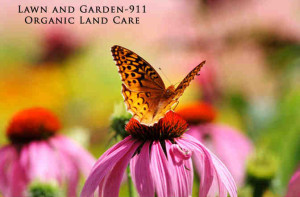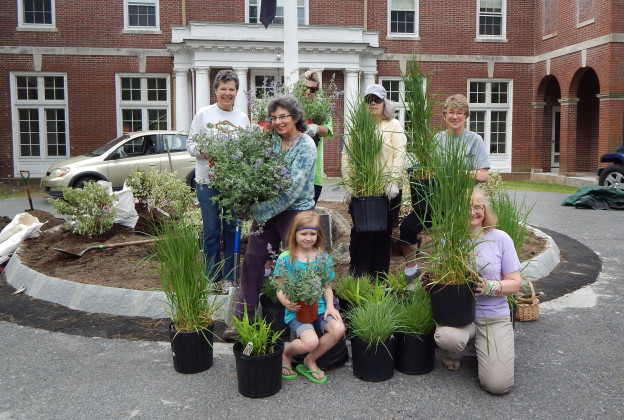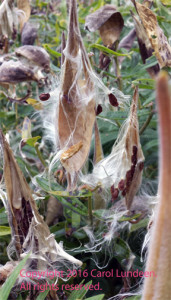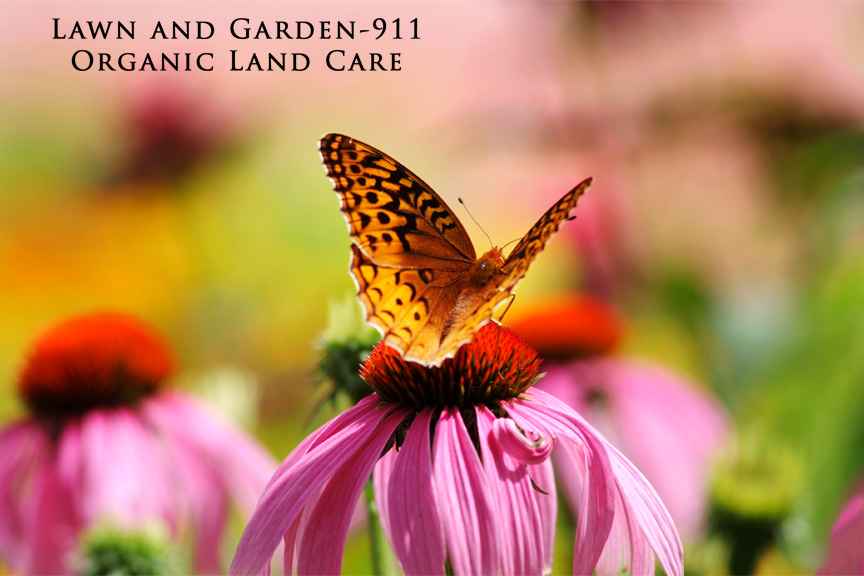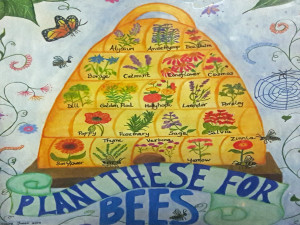
Plant These For Bees, a display at the Sharon Garden Club by guest speaker and beekeeper Barbara MacPhee. Suggested flowers for pollinators include anise hyssop, rosemary, poppy, bee balm, catmint, coneflower, borage, and thyme. [Photo by Dixie Buckland]
Fun honey bee facts from Sharon Garden Club presenter and beekeeper Barbara MacPhee, at our February meeting:
- Among honey bees, it’s the worker bees (who are all females) that you see (and hear) collecting nectar and pollen. The males, called drones, maintain the hives.
- It takes 1,152 honey bees flying a distance of 112,000 miles, harvesting from 4.5 million flowers, to produce one pound of honey. Now that is impressive, ladies!
- In early spring, bees need early-flowering plants like snowdrops, Claytonia and dandelions to support their hives. Forsythia, while a traditional feel-good sign of spring for humans, has zero pollen and zero nectar. Consider replacing one with a pollinator-friendly native shrub like redbud or viburnum.
- Later in the season, agastache, clover (yes, in your lawn!) and borage, plus winterberry and American holly, are some of the other plants that honey bees favor.
And my two cents: Think about it: just about everything you and I eat was once a plant, most likely a flowering plant. No pollinators, no food. Are you hungry to support pollinators now?
Visit the Sharon Garden Club online

